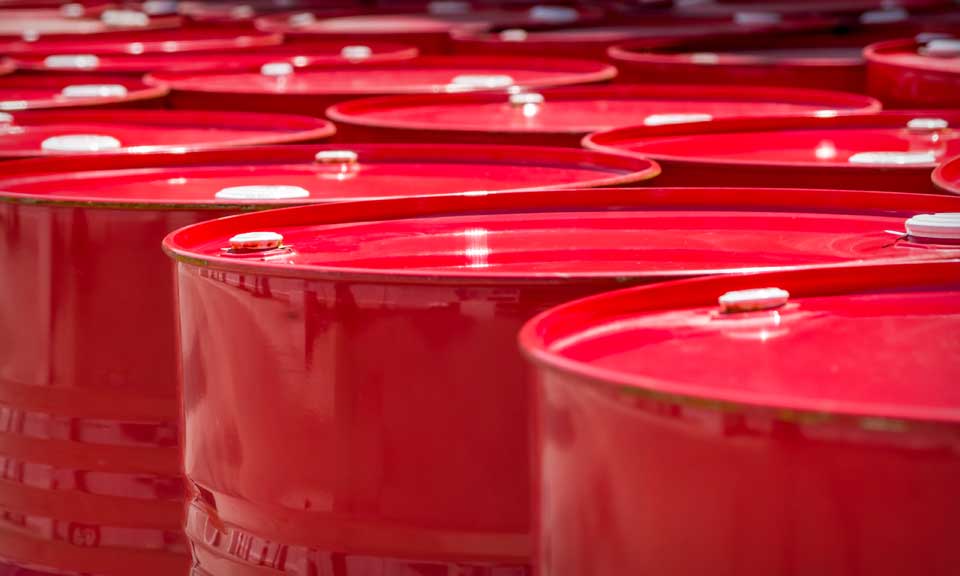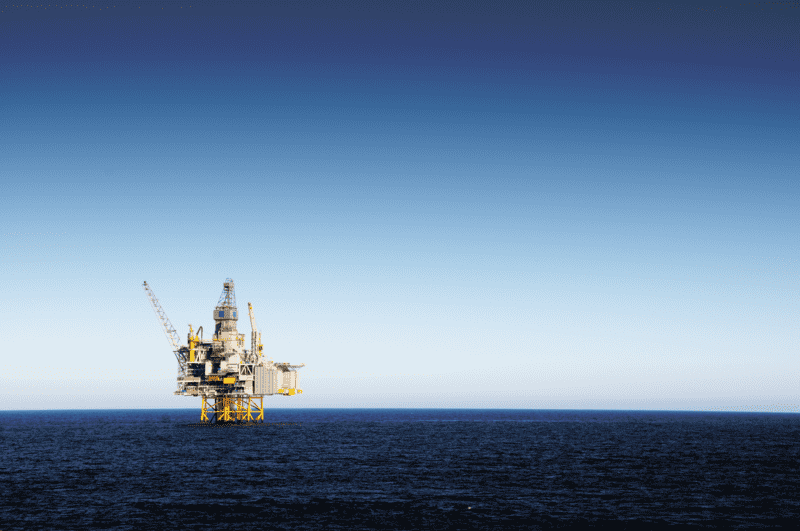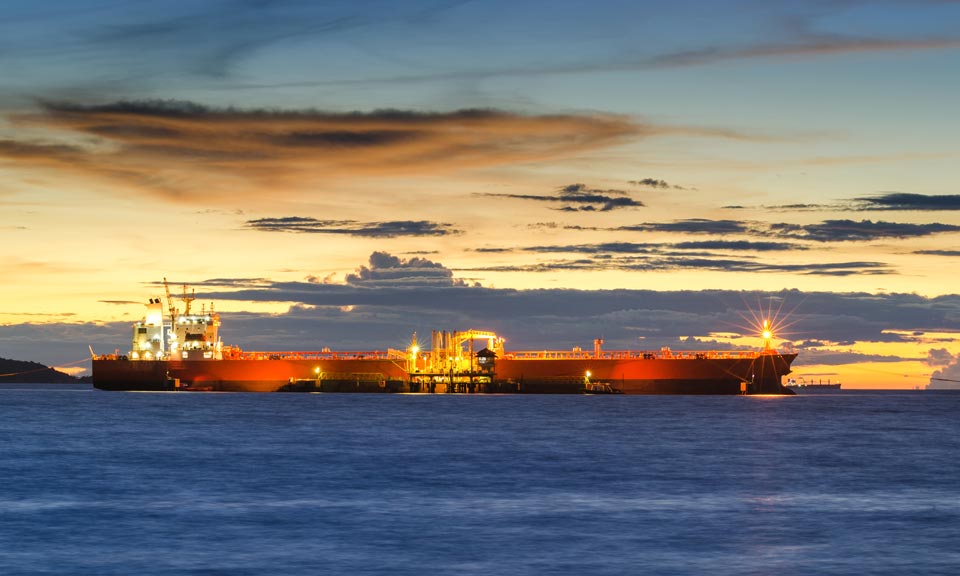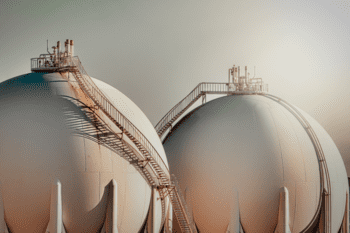Fuel for Thought: Russian crudes come under renewed pressure as G7 price cap nears

The value of Russia's key crude exports has come under renewed pressure as EU sanctions and the G7's price cap edge closer amid growing signs that the curbs pose little threat to Moscow's resilient output and oil revenues.
The outright price for Russia's flagship crude Urals slumped to 22-month lows in the run-up to the Dec. 5 start for the mechanism as weak physical market fundamentals and anxiety around sanctions risk have spurred even steeper discounts.
The discounts for Urals and ESPO—Russia's eastern-bound export crude—against regional benchmarks have also widened again in recent weeks although they remain well below record levels seen in the aftermath of Russia's Feb. 24 invasion of Ukraine.
Platts, part of S&P Global Commodity Insights, assessed medium sour Urals at $54.935/b Nov. 21, the lowest since Jan. 29, 2021. Compared with Dated Brent, the Urals discount widened to $29.50/b Nov. 24, its highest since Aug. 11. Russia's eastbound ESPO crude is valued higher and Platts assessed it at $74.32/b Nov 25. But the grade has also lost ground against regional benchmark Dubai over the last week, Platts data shows.
The weakening values for Russian crudes come as G7 moves closer to setting the level of its price cap on Russian oil, designed to stymie the Kremlin's oil revenues by controlling access to shipping services.
But following a week of crunch talks between diplomats in Europe to hammer out the mechanism's closely watched price cap, reports that the price ceiling considered could be a higher-than-expected $65-$70/b has surprised the oil markets.
Although consensus on the cap level has yet to be reached, many oil traders have rightly questioned the utility of the cap if it is set above the level at which Moscow's main export grade is currently trading.
"To me, this price cap means they want [Urals] to flow at current levels," a trader said, noting that the impact of the cap as an outright price will also be dependent on movements in international benchmarks to which Urals trades at a differential.
Russian crude has been trading at record discounts of up to $40/b in wake of Russia's invasion of Ukraine as key buyers in Europe shunned Moscow's oil. The bulk of Russia's crude exports is now flowing to refiners in Asia, with China and India being its key customers.
With the oil market turning bearish as a growing list of poor economic data has undermined confidence in demand, Brent crude prices and Urals crude differentials have taken a hit in the past few weeks.
Such concerns are exacerbated by weakness across physical crude markets, particularly in Asia, where rising coronavirus cases have dampened demand from China, the world's largest crude importer, and weighed heavily on the Middle Eastern sour complex.
That looks set to drive the Urals to even steeper discounts to Dated Brent just as the price cap comes into force, before even considering the logistical effects of the looming sanctions.
Demand for Russian ESPO from Chinese and Indian refineries has also slowed in recent cycles with traders citing a hefty overhang in December-loading cargoes.
"Oman [crude values] have come off, a lot of [Upper Zakum] has come off a lot … why would you take Russian barrels?" said a second trader.
Platts assessed ESPO at a discount of $6.74/b to Platts Dubai Nov. 25, a six-week high after discounts for the grade had almost shrunk back to pre-war levels earlier in the month.
"It's hard to find much bidding interest in the eastern market at all, no matter what grade," the second crude trader said. "Everything is dropping like a stone, including Russian crudes."
Delivered values for the Russian Urals to India have also shrunk through November, even as freight rates have soared, an Indian refining source said. With the Middle Eastern sour complex continuing to soften, some traders suggested major buyers are likely to look more favorably on conventional sour flows compared with riskier Urals over the coming weeks.
Russia's Urals is classified as a medium sour grade, with a specific gravity of about 31.7 API and sulfur content of 1.7%, while ESPO is lighter and sweeter, with 34.7 API and sulfur content of 0.55%, according to the Platts periodic Table of Oil.
S&P Global forecasts Russian crude and condensate output to fall by 1 million b/d between November and March, that is 1.5 million b/d below pre-conflict levels, due to the looming EU bans and G7 restrictions on maritime services and financing. The EU crude import ban and G7 price cap will both be in place from Dec. 5 onward.
But paul Sheldon, chief geopolitical advisor at S&P Global, said odds are rising that supply could exceed expectations.
"Russia has already had significant time to prepare, increasing its ability to secure a sufficient fleet of ships and non-Western maritime services," Sheldon said. "A softening of the EU ban on ships not complying with the price cap (if finalized) could increase tanker availability, more sanctions exemptions could arise, and/or a price cap as high as reported levels could cause Russia to hold its nose and maintain supplies, especially if the alternative is damaging shut-ins."
Almost five months in the making, G7 nations have yet to set the maximum price at which shippers from G7 and EU countries may legally transport Russian crude and products.
Russia has so far insisted it will not sell its oil under the price caps, which forces it to develop alternative supply chains to bypass the measures or shut-in its displaced oil.
Many expect refiners in China, India, and Turkey—the top current destinations for Russian crude— to absorb more of the affected oil. Combined, the three buyers have seen their seaborne imports of Russian crude almost treble from prewar levels to over 2 million b/d, accounting for nearly 70% of Russia's seaborne flows.
But the logistical risks brought by the new sanctions regime present an additional hurdle. The so-called shadow tanker fleet carrying Russian crude is expanding, with the G7 oil price cap regime expected to banish Russian barrels into non-mainstream trades. This is likely to exacerbate maritime trade risks for the shipping industry.
"The general consensus is that ... the majority of mainstream tanker owners will be prevented from lifting Russian barrels," said shipbroker BRS in a recent note.
Uncertainties over implementation and likely Russian workarounds mean, even when the G7 does set the price cap, the impact of Russian export flows will be hard to call.

News
Eni is to combine its North Sea oil and gas business with upstream independent Ithaca Energy, majority-owned by Israel's Delek, in a deal set to give the Italian company a 37.3% stake in the "satellite" entity, the companies said late April 23. The deal, first publicly mooted in late March, follows quickly on from Eni's acquisition of London-based Neptune Energy in January, which included an operating stake in the UK's highest producing gas field, Cygnus. The combination should result in 2024 production of over 100,000 b/d of oil equivalent, with a roughly equal weighting between oil and gas, and the potential to reach 150,000 boe/d by the early-2030s, the companies said. The deal continues a strategy for Eni of creating "satellite" joint ventures offshore Norway and Angola, although Delek is expected to remain the largest shareholder in this instance, with a 52.7% stake upon completion. The deal excludes Eni's East Irish Sea and carbon capture and storage projects, with the Italian company remaining the primary investor in flagship government-backed CCS project HyNet North West. Ithaca produced just over 70,000 boe/d in 2023, of which 66% was oil, and had warned its production from the current business would drop to 56,000-61,000 boe/d this year, reflecting the cancellation of several new projects due to the UK tax regime. It has struggled to make headway with the major West of Shetland Cambo oil project -- previously the target of environmental protests -- after entering the project in April 2022 with the purchase of Siccar Point Energy. Eni had production of around 50,000 boe/d offshore the UK in 2023. "The Satellite Model is a strategic response to the challenges and opportunities of energy markets, creating focused and lean companies able to attract new capital to create value through operating and financial synergies and the acceleration of growth," Eni said. "The combination will allow Eni to continue pursuing its successful growth on the UK continental shelf, thereby strengthening its commitment to the UK." Ithaca Executive Chairman Gilad Myerson said: "The synergistic combination with Eni's highly cash-generative UK continental shelf portfolio has the ability to unlock our long-life organic growth opportunities, creating a combined entity with substantial scale and longevity." Expanded asset base The combined entity will have reserves and contingent resources of some 658 million barrels of oil equivalent, including stakes in 37 producing assets, among them six of the UK's 10 largest fields -- Rosebank, Cambo, Schiehallion, the Mariner area, the Elgin-Franklin complex and the J-Area, the companies said. Ithaca already held stakes in Elgin-Franklin and the J-Area, which are thus increased by the combination. Elgin-Franklin, operated by TotalEnergies, is a significant contributor of both gas to the UK and liquids sold under the Forties crude brand, while the J-Area, operated by Harbour Energy, contributes to Ekofisk crude loadings; Forties and Ekofisk are key grades in the Platts Dated Brent price assessment process. Platts is part of S&P Global Commodity Insights. Ithaca is also Equinor's partner in the Rosebank oil project under development in the West of Shetland area, which has similarities to Cambo, while the Equinor-led Mariner field contributes UK heavy crude oil. The combination entails issuing to Eni new Ithaca shares equivalent to 38.5% of the enlarged entity, with Delek selling 3% of the enlarged share capital to ensure 10% or more remains in public hands on the London Stock Exchange. Dated Brent was assessed at $88.73/b on April 23, up $1.18 on the day, while the month-ahead UK NBP gas contract was assessed by Platts at 71.35 p/th.

News
Russia, one of the world’s largest oil suppliers, has increasingly turned to non-Western firms to transport its crude to overseas buyers during its ongoing war with Ukraine . With a dual goal of undermining Russia’s war chest without creating significant disruptions to global supplies amid inflation pressure, G7 countries and their allies have banned tanker operators, insurers and other services firms from facilitating seaborne Russian crude exports unless the barrels are sold for no more than $60/b. The price cap regime, which came into force Dec. 5, 2022, does not directly cover tankers flagged, owned and operated by companies outside the G7, the EU, Australia, Switzerland and Norway, and not insured by Western protection and indemnity clubs. While such ships tend to be older and less maintained, their share in Russia’s crude exports market has been rising in recent months amid strengthening prices of Urals -- the OPEC+ member’s flagship crude grade -- and tightening sanctions enforcement by the West. Non-price-capped tankers have a larger market share in shipping Russia’s Pacific crude exports, according to analysis of S&P Global Commodities at Sea and Maritime Intelligence Risk Suite data. Crudes such as Sokol, Sakhalin Blend, and Eastern Siberia–Pacific Ocean grades are more often involved in these trades than Russian barrels from Baltic or Black Sea ports like Urals. Tanker operators in Greece, Europe’s top shipowning nation, managed to keep their traditionally strong market position in Russia in the first few months since the price cap took effect before giving ways to their peers in the UAE, Russia, China and Hong Kong. (Latest update: April 5, 2024)

News
Recording changes to Russian oil exports and EU oil imports since the war in Ukraine Russia’s war in Ukraine has triggered a major upheaval in the global oil markets, forcing Moscow to find alternative buyers and Europe to source new supplies as Western sanctions seek to clamp down on Moscow’s vital oil revenues. With an EU embargo and the G7 price cap on Moscow's oil now fully in place, Russian seaborne crude exports have remained largely resilient as displaced volumes of its discounted oil flow East. Russian oil product exports have also mostly held up with new buyers in Africa absorbing Russian diesel and other fuels now banned from Europe. (Latest update: April 3, 2024)

News
Initiative driven by demand for batteries from vehicles, energy storage IOC aims to be carbon-free by 2046 Tie-up comes as India supports NEV buildup Japan's Panasonic Energy and state-run Indian Oil Corp aim to finalize details for a joint-venture to manufacture cylindrical lithium-ion batteries in India as early as June to September, the Japanese battery maker said April 1. Both companies will engage in "a feasibility study regarding the utilization of battery technology to facilitate the transition to clean energy in India," Panasonic said, and have signed a binding term sheet with details to emerge "by the summer of this year." The initiative by the companies "is driven by the anticipated expansion of demand for batteries for two- and three-wheel vehicles and energy storage systems in the Indian market", it said. The collaboration comes as India takes steps to build up infrastructure for manufacturing and supporting new energy vehicles, especially in its interim budget for 2024-25. Following the budget announcement, Chinese automaker SAIC Motor and India's JSW Group plan to install a production capacity of 200,000 vehicles/year in India, focusing on NEVs, with ramping up to start from the end of 2024. In China, NEV is a term used to designate automobiles that are fully or predominantly powered by electricity and include battery electric vehicles as well as plug-in hybrid EVs and fuel cell EVs. IOC's tie-up with Panasonic will support the energy company's goals to be a zero-carbon emitter by 2046. India's lithium-ion battery manufacturing industry is expected to grow at a compound annual growth rate of 50% from 20 GWh in 2022 to 220 GWh by 2030, data from the India Brand Equity Foundation showed. Platts assessed prices for battery grade lithium carbonate at $14,350/mt CIF North Asia March 28, flat from the previous session, S&P Global Commodity Insights data showed, while lithium hydroxide stood at $14,000/mt CIF North Asia, also unchanged from the session before. Platts Connect: News & Insights (spglobal.com)